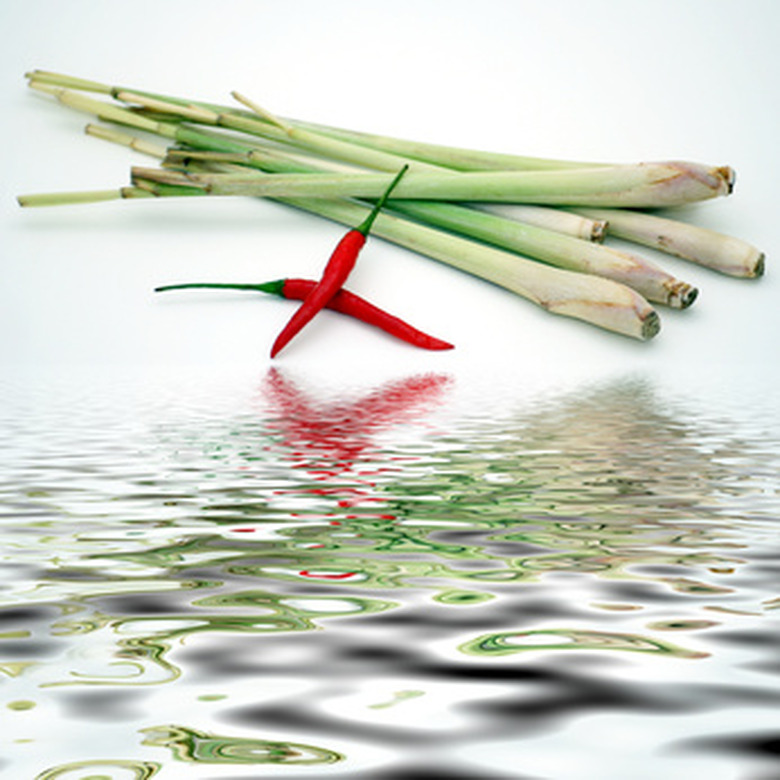Types Of Lemon Grass
Lemon grass produces an essential oil called citral in the bulbous stems located just above the root section. Citral is used for cosmetics, cooking and industrial applications. Although USA and Europe are the biggest consumers of lemon grass essential oil, most of it is produced in India. It grows best in warm, humid climates. East Indian lemon grass is generally considered to have a higher essential oil content than Northern or Western types of lemon grass, but newer hybrid and crosses have blurred that distinction in recent years.
Sugandhi
The Sugandhi variety of lemon grass is adaptable to a wide range of soils and has the highest oil content. This red-stemmed variety of lemon grass comes from East India.
- Lemon grass produces an essential oil called citral in the bulbous stems located just above the root section.
- The Sugandhi variety of lemon grass is adaptable to a wide range of soils and has the highest oil content.
Pragati
The Pragati variety of lemon grass is a tall-growing variety. It has a dark purple sheaf that grows around the oil-containing, bulbous stems located at the base of the plant near the ground level. It does not have as high of an oil content as Sugandhi, and it is more adapted to the Northern India Plains. It is also considered an East Indian variety of lemon grass.
Jama Rosa
The Jama Rosa variety of lemon grass is a hardy and slightly more cold-tolerant variety of lemon grass that has vigorous growth. Because it grows more rapidly that other varieties, you can cut it several times for harvest during a 16 to 18 month growth period. Jama Rosa is a hybrid cross between several different species of lemon grass.
- The Pragati variety of lemon grass is a tall-growing variety.
- The Jama Rosa variety of lemon grass is a hardy and slightly more cold-tolerant variety of lemon grass that has vigorous growth.
Praman
The Praman variety of lemon grass has a high oil content and is a medium-sized plant compared to the other varieties. The leaves or growth habit of the grass is erect or upright compared to other varieties of lemon grass. Praman is a Northern lemon grass variety.
Grow Lemon Grass
Lush, aromatic lemon grass (Cymbopogon citratus) can fit into any garden — even if only for one season. Dig the compost into the soil with a shovel to a depth of 4 to 6 inches. Set the plant into the prepared soil at the depth it was in the nursery pot, and water in well. Feed lemon grass with a high-nitrogen, water-soluble fertilizer once a month throughout the summer months, mixed at half the recommended label rate. Check lemon grass for the white and yellow specks left by tiny spider mites or the small red spots of leaf blight — although the plant is generally resistant to pests and diseases if grown in the recommended conditions. Hand pick and discard any leaves that show signs of blight. Dig up a clump of the lemon grass plant from around the edge of the plant — or the whole plant if it's not too big — and place it in a pot with potting soil before the first frost below USDA zone 10 if you want to over-winter your lemon grass.
- The Praman variety of lemon grass has a high oil content and is a medium-sized plant compared to the other varieties.
- Dig up a clump of the lemon grass plant from around the edge of the plant — or the whole plant if it's not too big — and place it in a pot with potting soil before the first frost below USDA zone 10 if you want to over-winter your lemon grass.
References
- Purdue Horticulture: Lemongrass
- NHB: Lemon Grass
- NHB: Lemon Grass Varieties
- Missouri Botanical Garden: Cymbopogon Citratus
- University of Florida Nassau County Extension: Lemongrass
- The Wisconsin Master Gardener Program: Lemongrass
- Brooklyn Botanical Garden: Lemon Grass: A Very Versatile Herb
- MiracleGro: Miracle-Gro Water Soluble All Purpose Plant Food
